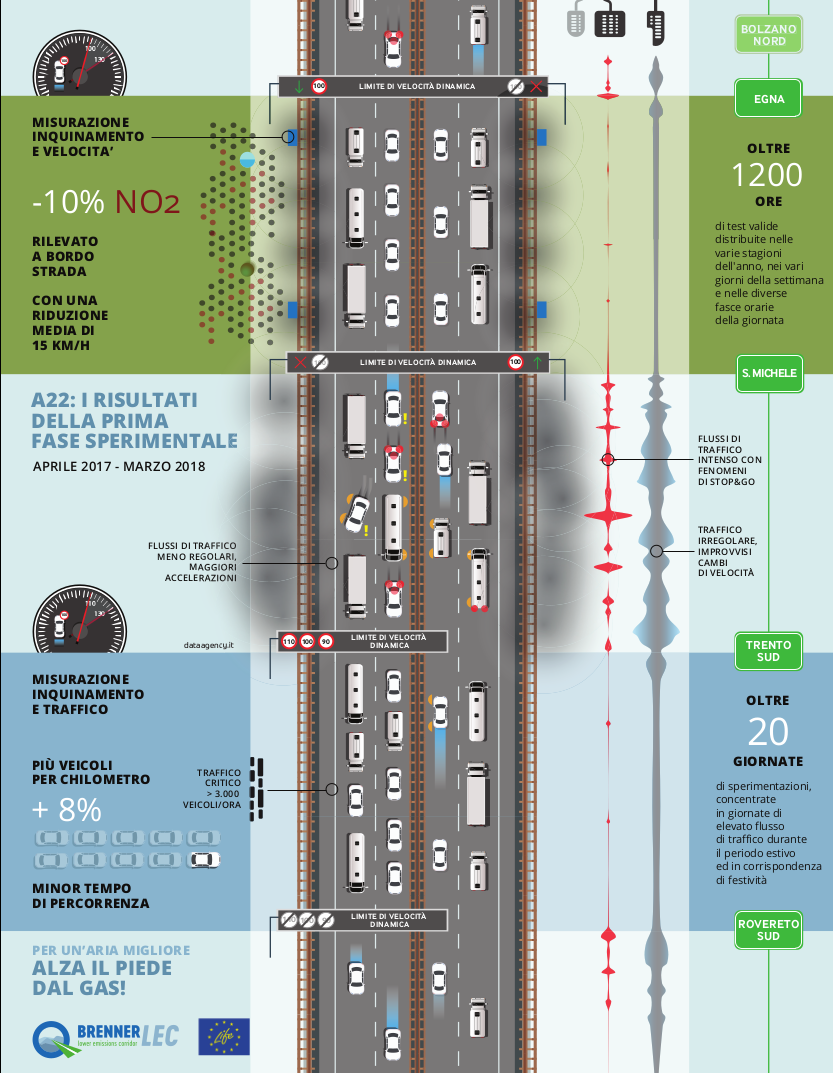Phase 1 results

From an environmental point of view the first empirical measurements have highlighted that an average reduction of 15 [km/h] of the average speed of light vehicles, compared with the normal flow of traffic with speed limit at 130 [km/h], determines a reduction of 10% of the average concentration of NO2 (nitrogen dioxide) at the roadside of the highway.
From a traffic point of view, in nearly saturated conditions, the application of variable speed limits (VSL) has determined an increase of the capacity of the highway. More specifically, under these conditions it has been empirically estimated an increase of 8% of the number of vehicles passed through the test stretch. Compared to standard conditions, VSL have confirmed to determine a better traffic fluidity, determining therefore a reduction of the traffic jams, of the stop&go situations and of the travel times.